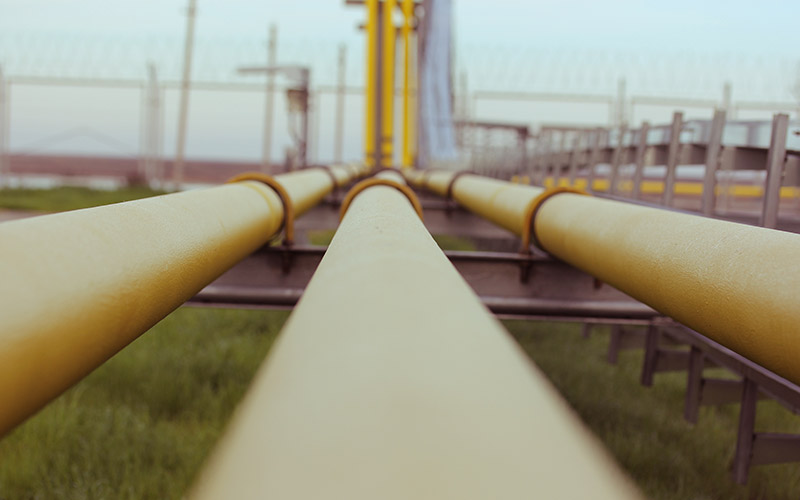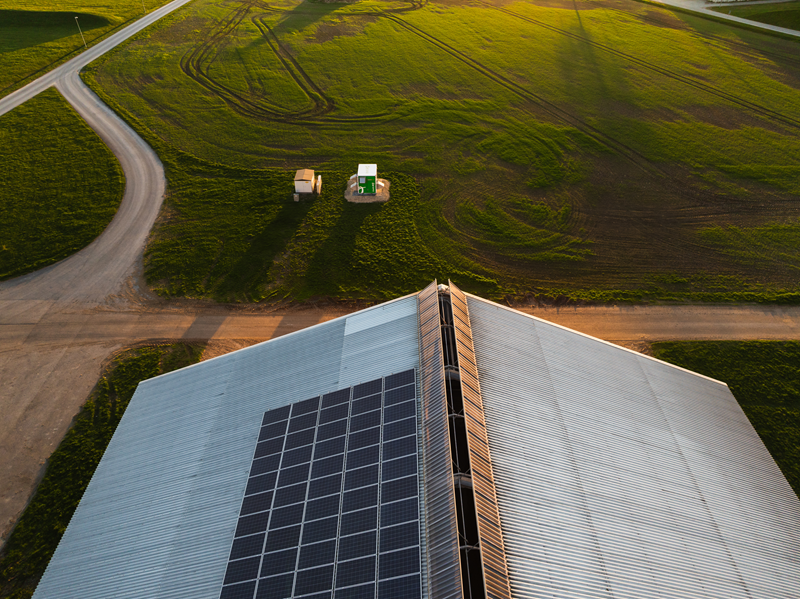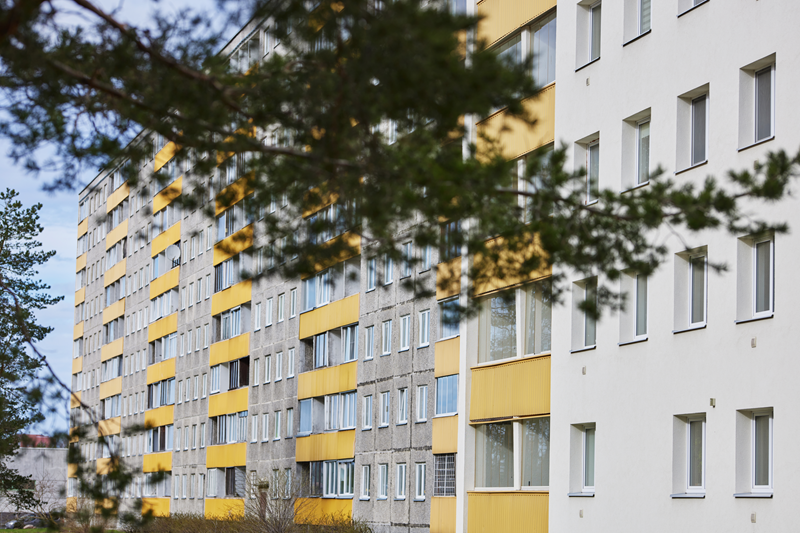The exchange price of electricity fell last week in Estonia, Latvia, Lithuania and Finland, but the most important events for Europe took place at the bottom of the Baltic Sea. Namely, Gazprom announced that the pipeline of Nord Stream 1, which was supposed to start working on Saturday after three days of maintenance, would remain offline for an unknown period of time.
| Price area | Average exchange price | Change (previous week) |
| Estonia | 304,25 eur/MWh | -21,1% |
| Latvia | 441,81 eur/MWh | -15,3% |
| Lithuania | 491,73 eur/MWh | -10,6% |
| Finland | 292,21 eur/MWh | -24,2% |
The cheapest exchange price of the week was in the early morning of 29 August, being 6.85 EUR/MWh between 2 and 3 o’clock. The hour with the highest price was on Tuesday, 30 August at 7-8 o’clock in the evening, rising to the level of 800 EUR/MWh. The new Finnish nuclear power plant Olkiluoto 3, which has been on the market since last week with a capacity of 800MW, has helped bring prices down in our region. During September, it is planned to increase its production capacity to 1,300 MW.
Last week, several countries, including Estonia, announced national measures to mitigate the effects of high energy prices. On Thursday, the Minister of Economic Affairs and Infrastructure Riina Sikkut sent the measure for compensatsion to the Ministry of Finance for approval. According to the measure, household consumers will be compensated up to €50/MWh from the price of electricity exceeding €80/MWh without VAT. The state will compensate 80% of the final price of gas for household consumers exceeding 80 €/MWh (without sales tax), for up to 2.6 MWh of consumption per month. In order to alleviate the price of heat distributed through district heating networks, the regulation stipulates compensation of 80% of the cost of heat at a price of more than €80/MWh (without sales tax). The compensation applies to domestic consumers from October 1 to March 31.
Russia has interrupted the operation of Nord Stream 1, Europe is in Russia’s energy trap
On Friday evening, Gazprom announced that Nord Stream 1 deliveries, after being under maintenance from Wednesday to Saturday, would stop for an unknown period of time. Prior to that, the price of natural gas, which had set records for two weeks, had fallen to the lowest level of that period – to EUR 214 per megawatt hour. Compared to a longer period, the price is still very high, being more than 2.5 times more expensive than in June, with the average weekly gas price being 245.8 €/MWh. The gas markets have started today with a 25% price increase following the announcement of NS1.
Despite the end of Russian gas supplies, the approaching winter may still be managed. The countries of the European Union have achieved 80 percent filling of gas storages two months earlier than planned, and gas consumption has been reduced more generally: natural gas was consumed 10% less this August compared to a year ago.
While at the end of last year, the share of natural gas delivered to Europe from Russia was at 25%, it had dropped to 10% in August. This is primarily Russia’s reaction to European sanctions. Therefore, compared to a year ago, the share of both LNG and Norwegian natural gas in Europe has increased significantly. It is the development of LNG receiving capacity that is currently in focus in Europe in order to escape Russia’s energy trap. Germany’s first LNG berth should be completed in Wilhelmshaven by the end of 2022.
If last Monday, Germany’s year-ahead electricity futures, which is the litmus paper for European energy prices, rose above 1,000 EUR/MWh, by Wednesday the price had fallen by 54%. This shows how sensitive we are to every news and announcement concerning the energy market. Even 486 euros per megawatt hour is still ten times higher than the average of the last decade. On Monday morning, futures turned higher again due to the disruption of Nord Stream 1. Although gas is stored for the coming winter, it is not clear today how Europe will cope with the coming winter of 2023 if no more gas is supplied to Europe from Russia.
Markets are waiting for European Union measures to control energy prices
The European Union is proposing various measures to control energy prices. The president of the European Commission, Ursula von der Leyen, has promised to publish their main features on 14 September. One plan concerns a tax on the windfall profits that lower-cost generators make because of high gas prices. The resulting revenue would be channeled into the state budget to help finance support for end-users of energy. Another plan calls on member states to reduce consumption and shift peak consumption to hours with less load. In addition, options for establishing a price ceiling for electricity and gas are being considered.
The mitigation measures are highly anticipated across Europe, as the average electricity price in August was the highest in history in most countries. The Estonian average was 361.35 €/MWh, 467.75 €/MWh in Latvia, 480.39 €/MWh in Lithuania and 361.35 €/MWh in Finland. Compared to December, the price in Lithuania and Latvia was more than twice as high in August.
Positive news came from France, where under pressure from the government, state energy company EDF promised to get all 56 of its nuclear reactors back up and running by winter. France’s nuclear production has been severely curtailed this summer due to high temperatures, as water levels in the rivers used to cool the plants are lower than usual.
The impact of energy prices on inflation is far from fully felt. The high prices of natural gas affect many areas, for example in Spain, the world’s fifth largest producer of ceramic tiles, the cost of converting clay to ceramic tiles has increased by 1,047% year-on-year.
In the European emissions trading system, the CO2 quota price fell to an average level of 77.9 €/t last week (-8.8 €/t compared to the previous week), but the upward trend is expected to continue in the long term, because Europe has not abandoned its climate goals despite everything.
Unit 4 of Sweden’s Ringhals Nuclear Power Plant will remain under repair until December
Important negative news for the Baltic Sea region arrived from Sweden, as it was revealed that unit 4 (1,100 MW) of the Swedish Ringhals Nuclear Power Plant, which was supposed to return to the market on 7 September, would remain under repair until at least December. Last Wednesday, the Swedish transmission system operator announced that the risk of limiting electricity consumption in southern Sweden during the winter months had increased.
Estonia’s production capacity was on average 600 MW on the market last week, mainly affected by the planned maintenance of energy units before the coming of winter. Unit 11 of Balti Power Plant and Unit 5 of Eesti Power Plant will return to the market in full this week, meaning that from Sunday all the capacities of the plants in Narva will be in operation, except for the long-planned annual maintenance of Unit 3 of Eesti Power Plant.
The price of electricity is formed on the power exchange for each hour depending on the production capacity and consumer demand for that particular hour, as well as on transmission limitations between countries.
Olavi Miller, Market Analysis Strategist at Eesti Energia
The market overview has been prepared by Eesti Energia according to the best current knowledge. The information provided is based on public data. The market overview is presented as informative material and not as a promise, proposal or official forecast by Eesti Energia. Due to rapid changes in electricity market regulation, the market overview or the information contained therein is not final and may not correspond to future situations. Eesti Energia shall not be responsible for any costs or damages that may arise in connection with the use of the information provided.



